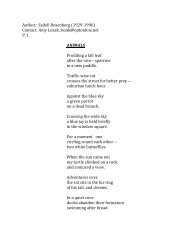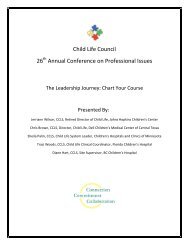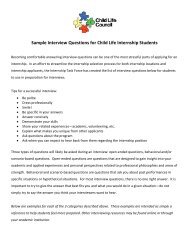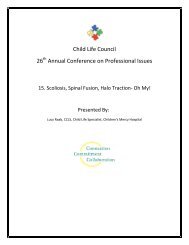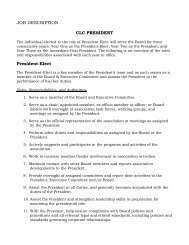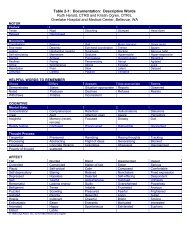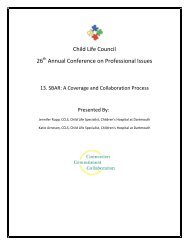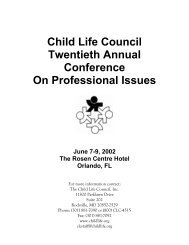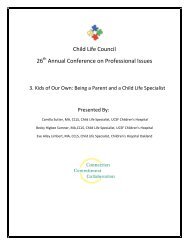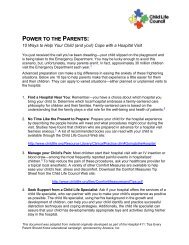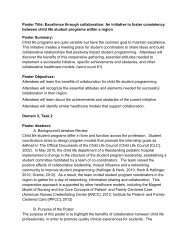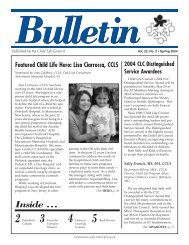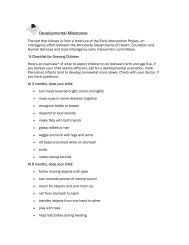Child Life Clinical Internship Curriculum - Child Life Council
Child Life Clinical Internship Curriculum - Child Life Council
Child Life Clinical Internship Curriculum - Child Life Council
Create successful ePaper yourself
Turn your PDF publications into a flip-book with our unique Google optimized e-Paper software.
Related Domains and Tasks from Professional Certification Examination Classification<br />
System<br />
Domain I: Assessment<br />
Task 3 – Identify psychosocial factors (e.g., diversity, culture, spirituality, family<br />
dynamics and structure, coping styles, socioeconomic status) and family‐identified<br />
needs and goals in order to provide family‐centered care.<br />
Domain II: Intervention<br />
Task 2 – Empower and collaborate with children and families to develop and use<br />
advocacy skill.<br />
Task 3 – Provide educational opportunities and resources that are responsive to the<br />
needs of children and families in order to promote learning and mastery.<br />
Objectives<br />
In the process of completing this module the intern will:<br />
1. Articulate the philosophy and principles of patient and family‐centered care.<br />
2. Demonstrate an understanding of the impact of diversity, culture, spirituality and<br />
socioeconomic status on coping.<br />
3. Demonstrate an understanding of and appreciation for the variety of family dynamics<br />
and structures, and their impact on coping and education.<br />
4. Utilize appropriate language and teaching tools to best support the patient and family.<br />
5. Demonstrate successful and effective communication skills during patient and family<br />
interactions.<br />
6. Identify appropriate resources for patients and families which will support the family<br />
during the health care experience.<br />
7. Utilize appropriate developmental knowledge in formulating interventions and<br />
education across the life span.<br />
8. Incorporate knowledge of development and family systems to support siblings,<br />
individually and in groups.<br />
9. Identify effective and reflective methods of interaction during times of stress,<br />
including response to emotional, verbal and body language cues exhibited by families.<br />
15



